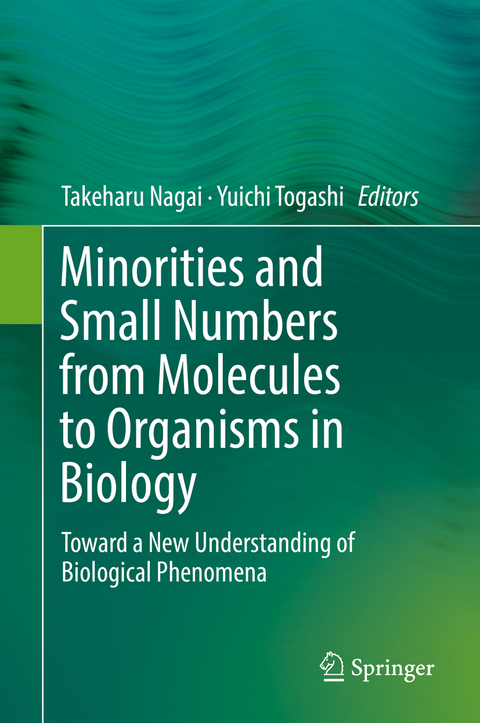
Minorities and Small Numbers from Molecules to Organisms in Biology
Springer Verlag, Singapore
978-981-13-2082-8 (ISBN)
Takeharu Nagai The Institute of Scientific and Industrial Research, Osaka University, Japan Professor Yuichi Togashi Graduate School of Science, Hiroshima University, Japan Associate Professor
Chapter 1.A look at functions that emerge from small numbers.- Chapter 2.Neuronal synaptic connections organized by small numbers of molecules.- Chapter 3.Invasions of small numbers: how many virus particles does it take to infect someone with the flu?.- Chapter 4.Rebellion by the minority: prophecies by molecules on paper and computers.- Chapter 5.The personality of small numbers: do molecules have personality?.- Chapter 6.Distinguishing and searching for minority cells: small in number, but large in effect.- Chapter 7.Digital bioanalysis.- Chapter 8.How small numbers of long genomic DNA are stored in cells.- Chapter 9.Formation by small numbers: minority biological scenarios in correlations among the structure, dynamics, and function of nuclear chromosomes.- Chapter 10.Dividing small numbers: the discreteness and distribution of molecules in the cell membrane.- Chapter 11.Getting to know the functions of small numbers.- Chapter 12.Working in small numbers: The behaviors that emerge when small numbers of bionanomachines team up.- Chapter 13.Thinking small numbers: when, where, and how many molecules there are in the cell.- Chapter 14.Determining small numbers: how the number of flagella is determined.- Chapter 15.Controlling production with small numbers: precision apparatuses made of proteins at work in bacteria.- Chapter 16.Organisms that function with small numbers of molecules.- Chapter 17.How low can you go? The numbers of cells that make up bodies: large numbers and small numbers.- Chapter 18.The flow of time inside the cell: the time of days given by molecules driving the circadian clocks.
| Erscheinungsdatum | 12.11.2018 |
|---|---|
| Zusatzinfo | 1 Illustrations, color; 47 Illustrations, black and white; XII, 150 p. 48 illus., 1 illus. in color. |
| Verlagsort | Singapore |
| Sprache | englisch |
| Maße | 155 x 235 mm |
| Themenwelt | Naturwissenschaften ► Biologie ► Biochemie |
| Naturwissenschaften ► Biologie ► Zellbiologie | |
| Naturwissenschaften ► Physik / Astronomie ► Angewandte Physik | |
| ISBN-10 | 981-13-2082-9 / 9811320829 |
| ISBN-13 | 978-981-13-2082-8 / 9789811320828 |
| Zustand | Neuware |
| Haben Sie eine Frage zum Produkt? |
aus dem Bereich


